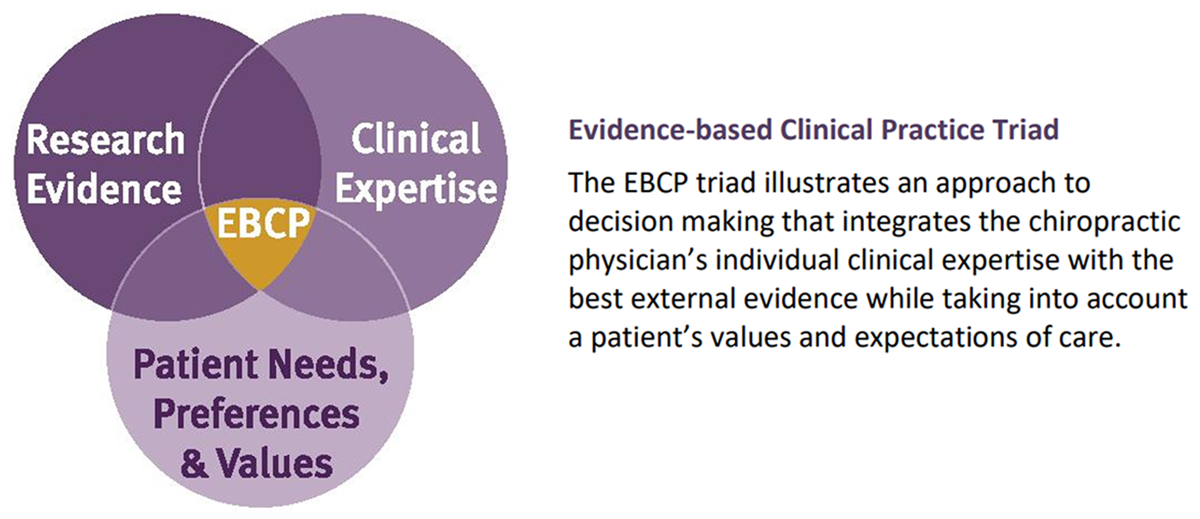Commentary: Is EBM Damaging the Social Conscience of Chiropractic?
Chiropractic J Australia 2016 (Dec); 44 (3): 203–213 ~ FULL TEXT
Phillip Stuart Ebrall, BAppSc(Chiropr), GradCert (Learn&Teach), PhD
Senior Education Advisor,
Tokyo College of Chiropractic;
Faculty of Medicine,
International Medical University,
Kuala Lumpur
Introduction: One expression of the social conscience of chiropractic is the provision by chiropractic educational institutions of low-cost or free chiropractic care to disadvantaged communities. It is expected that institutions offer to all patients the same full standard of care that is the hallmark of traditional chiropractic.
Objective: To explore whether an observed schism occurring within chiropractic education, where a minority of institutions are minimising the major premise of the discipline and replacing it with an emphasis on only the science or literature component of the evidence-based triad, has any potential impact on the quality of care provided particularly within the charitable context.
There are more articles like this @ our:
Data Sources and Synthesis: The indexed literature supplemented by informal literature, news reports, URLs identified by on-line searching, personal communication and key informants. A contextual narrative identifies themes which combine to suggest the healing component of the chiropractic encounter may be compromised. Concern is also expressed that students in those institutions which have removed the major premise of chiropractic from their curriculum may experience compromise in their learning which may negatively impact patient care.
Conclusion: The social conscience of chiropractic may be compromised by undue emphasis on science and the relegation of traditional concepts as historical artefacts. Academic chiropractors seem yet to address potential consequences.
Keywords Chiropractic; Medical History; Evidence-Based Practice
From the FULL TEXT Article:
Introduction
The general understanding of social conscience is being aware of problems that affect people in society and involves an attitude of sensitivity and responsibility toward them. This is typically reflected in chiropractic educational programs by offering lower cost healthcare to the public through an on-campus clinic and ‘gold-coin’ or other donation system for care delivered in outreach clinics. These may include missionary-style visits to remote communities in other countries. It is thought that academic and clinical chiropractors may best lead students by example. A relevant question that arises is how a social conscience to do good is enacted, in particular for chiropractic students, and whether it is by application of the major premise of chiropractic which includes a contemporary concept of subluxation or by a mode of chiropractic that excludes subluxation on the basis it is not evidence-based?
Evidence-based medicine (EBM) was conceptualised in mid-19th century Paris and given life by Sackett in the 1990s as a mechanism to formalise science within the healing equation between the practitioner and the patient. [1] Over the past decade some academic chiropractors have placed increasing emphasis on the science component to the detriment of the others. The discipline of chiropractic was founded about a century ago from medical concepts first reported in the early 19th century. Its major premise holds that small dysfunctions between vertebrae loosely considered ‘subluxations’ may effect neurophysiological change that may be corrected by targeted therapeutic input considered as the ‘chiropractic adjustment.’
Globally there are today some 46 or so universities and institutions which teach the discipline [2] and I believe a schism is occurring among them. This paper does not attempt to determine the growth point at which any health discipline becomes large enough to diverge in its teachings; rather, it is a reflection on an observed divergence and an attempt to narrate underlying factors that render such a divergence of value or not. The core question is the extent to which this divergence may damage the social conscience of chiropractic as enacted by the provision of care for less-privileged patients within a globally accepted healthcare profession.
SOURCE: Read the rest of this Full Text article now!







Leave A Comment